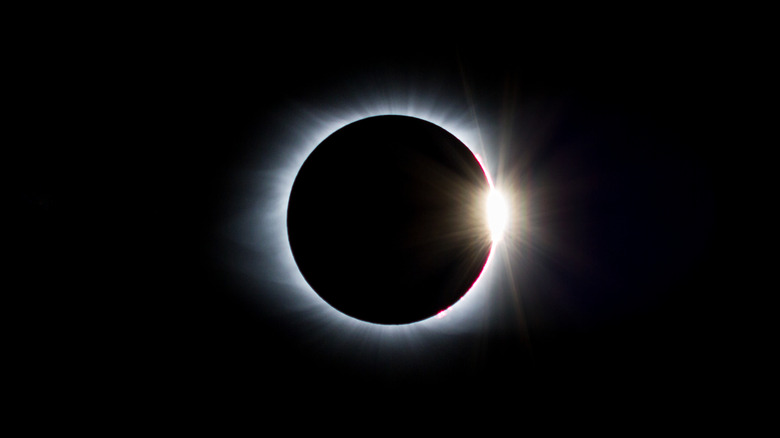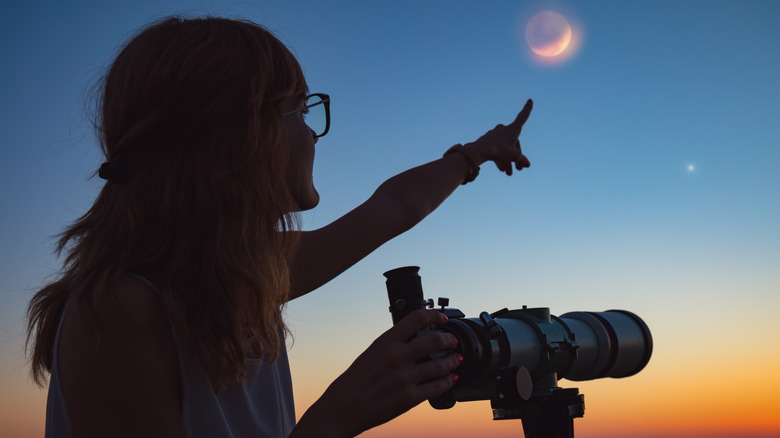What You Need To Know If You Want To Watch The May 26 Lunar Eclipse
According to NASA, an eclipse occurs when one planet, or other heavenly bodies, moves directly into the shadow of another, effectively blocking the view of one of the heavenly bodies to those of us watching down here on Earth. In the case of a lunar eclipse, what's happening is the Moon orbits around Earth, and Earth orbits around the Sun.
Once in a while, the Earth moves directly between the Moon and the Sun, which blocks the sunlight from reflecting off the Moon. In case you were wondering, that's the reason we can see the Moon ever, because of sunlight reflecting off of it. When this happens, we here on Earth can actually watch the Moon move into darkness.
The first lunar eclipse of 2021 will take place on May 26, (via India TV). If you are in Australia, parts of the western U.S., western South America, or in South East Asia, you will see the full Blood Moon, also called the Super Flower Full Moon, become completely eclipsed by the Earth and also appear to turn red for roughly 14 minutes, assuming weather cooperation, (via Time and Date). If you are in other parts of the world, you may get a chance to see a partial eclipse.
What time will you be able to see the eclipse?
If you're hoping to watch the eclipse, there is a map you can use to figure out exactly what time it will occur in your area, thanks to Time and Date.
Unlike a solar eclipse, it is safe to look directly at a lunar eclipse without protective eyewear, as you are only looking at reflected sunlight rather than direct sunlight, (via Travel and Leisure). It's also a great idea to use a pair of binoculars to get a closer view, or, if you have access to one, a telescope for the clearest view.
If you are hoping to catch photos of the celestial event, that can be a little bit trickier. According to Travel and Leisure, because the Moon is such a small point in the night sky, it's tough to get a good photo with anything less than a telephoto zoom lens. However, if all you've got is your iPhone, there may still be a way to get pretty good photos of the eclipse if you use something like the NightCap Camera app; just make sure your flash is off!

